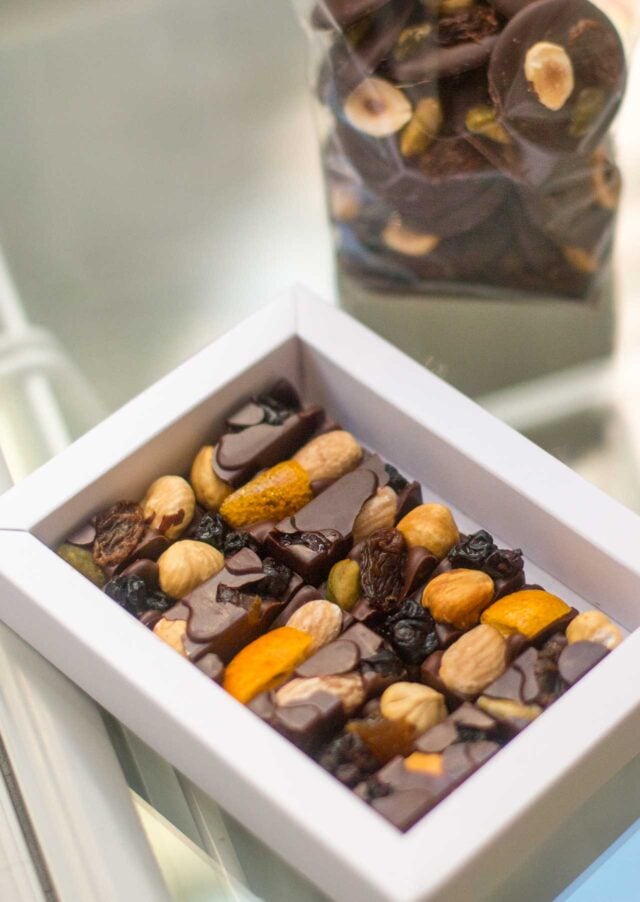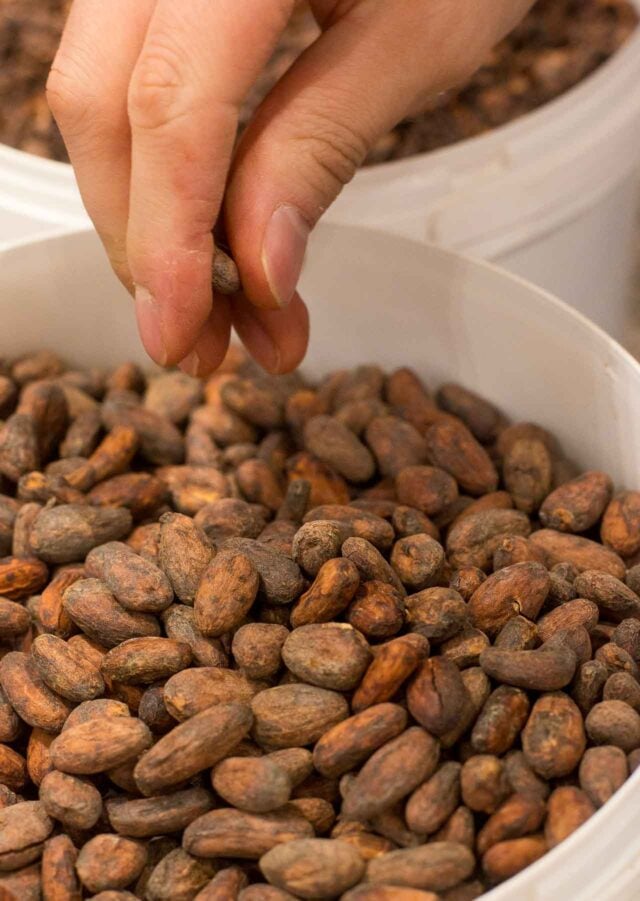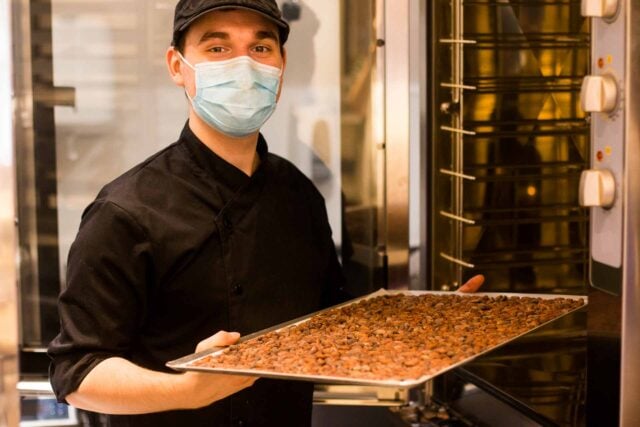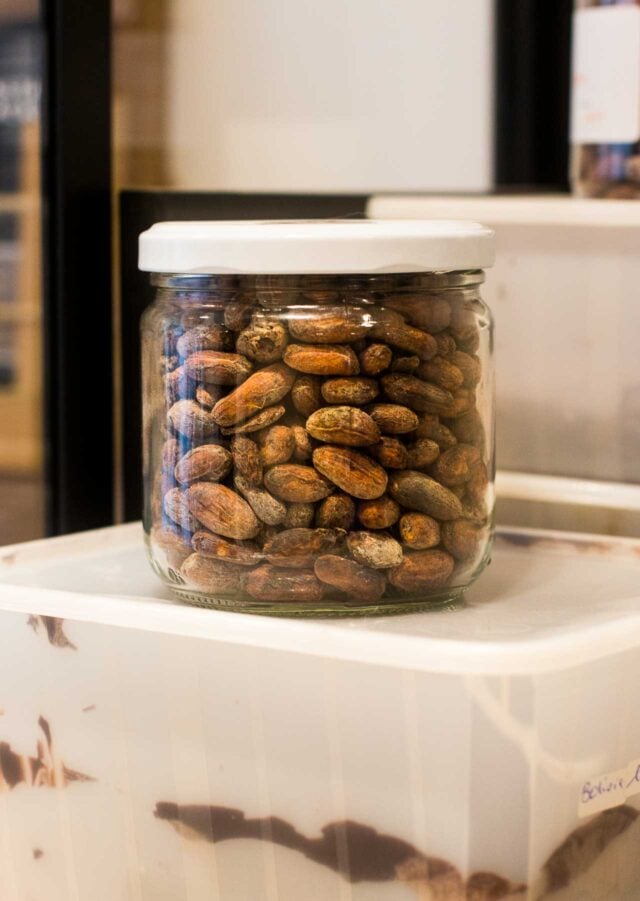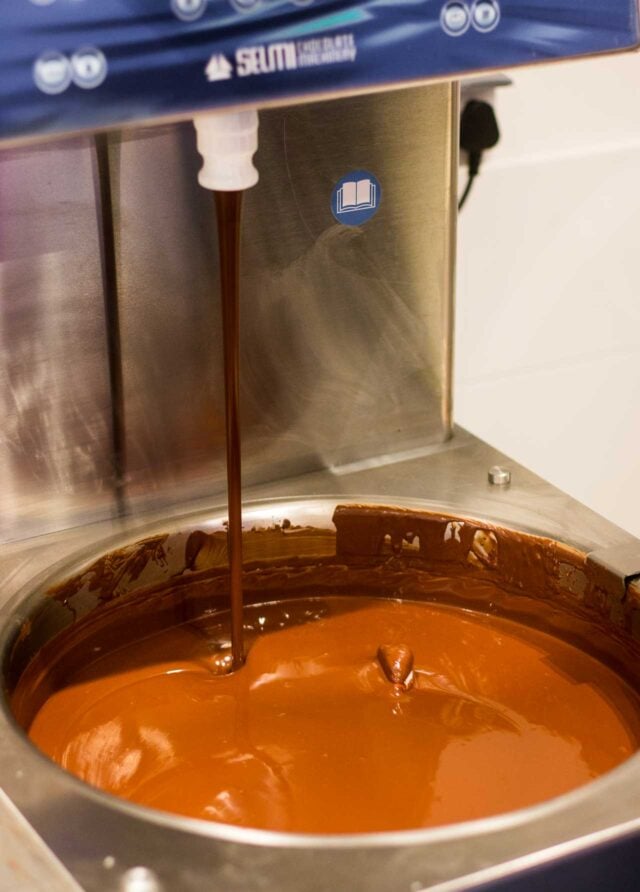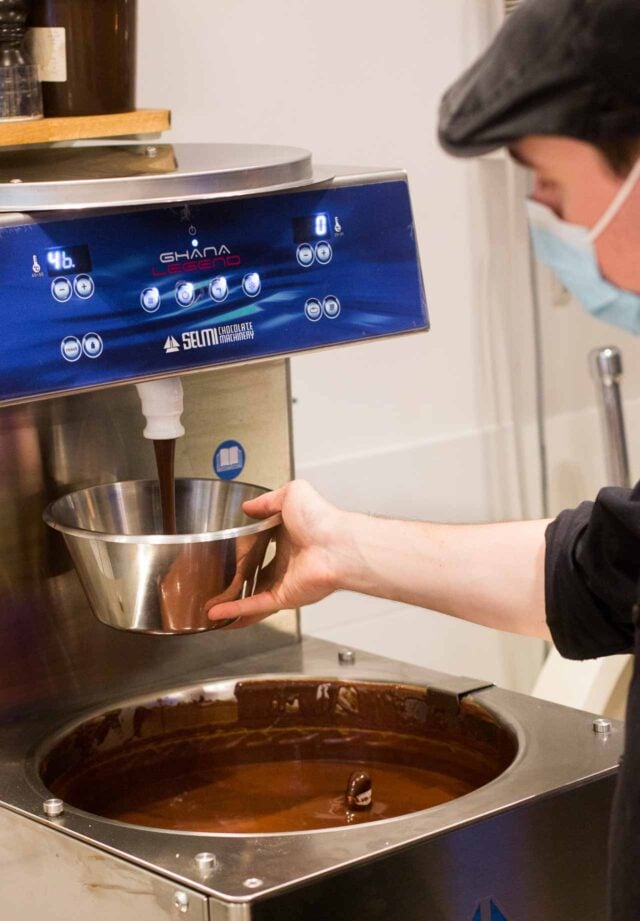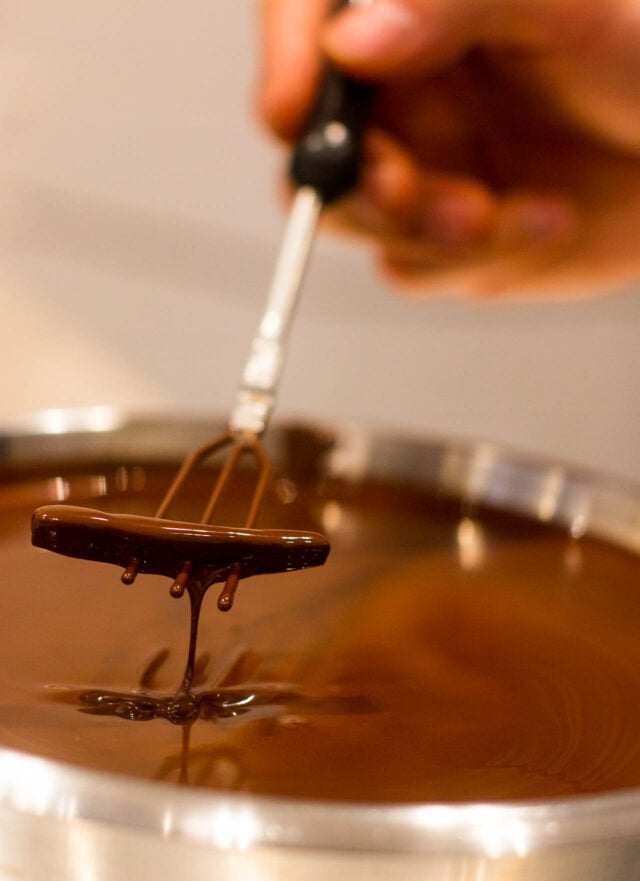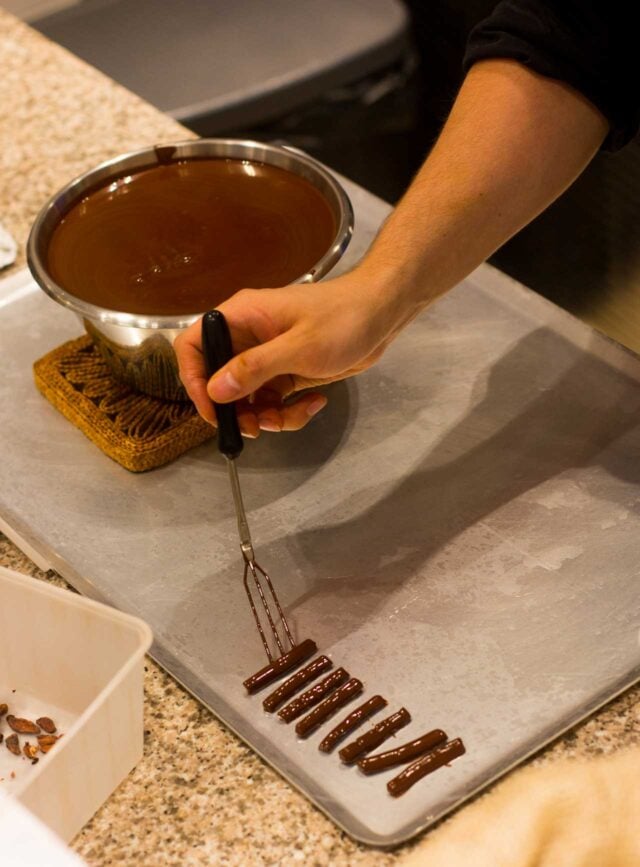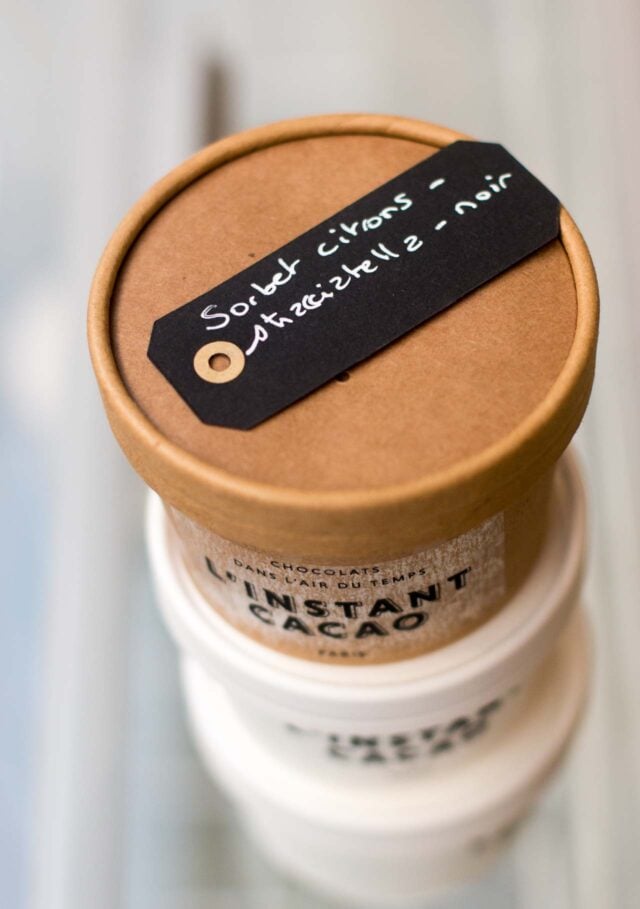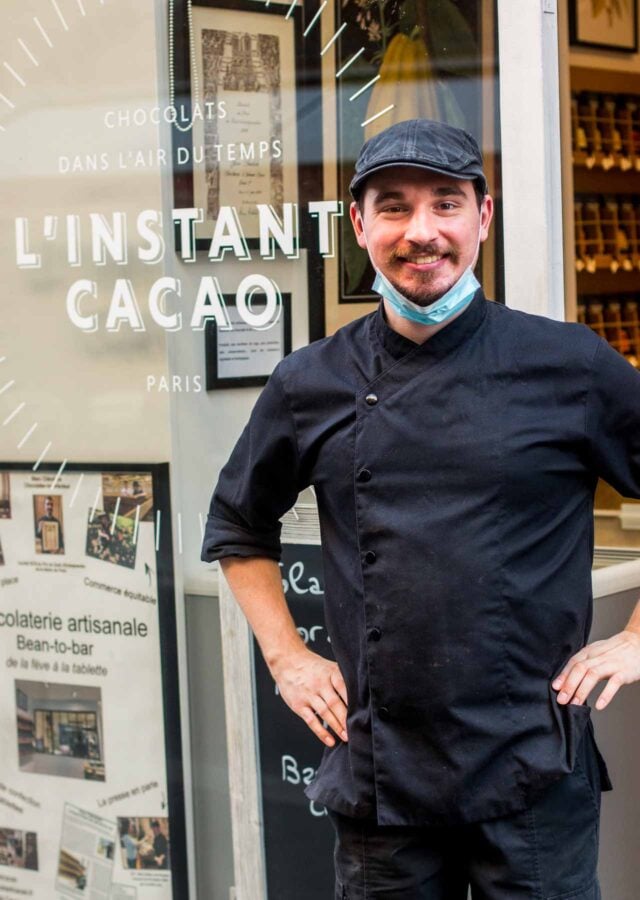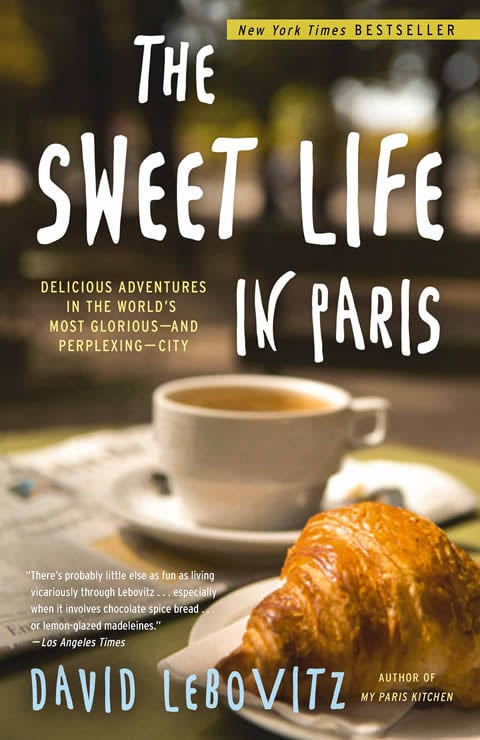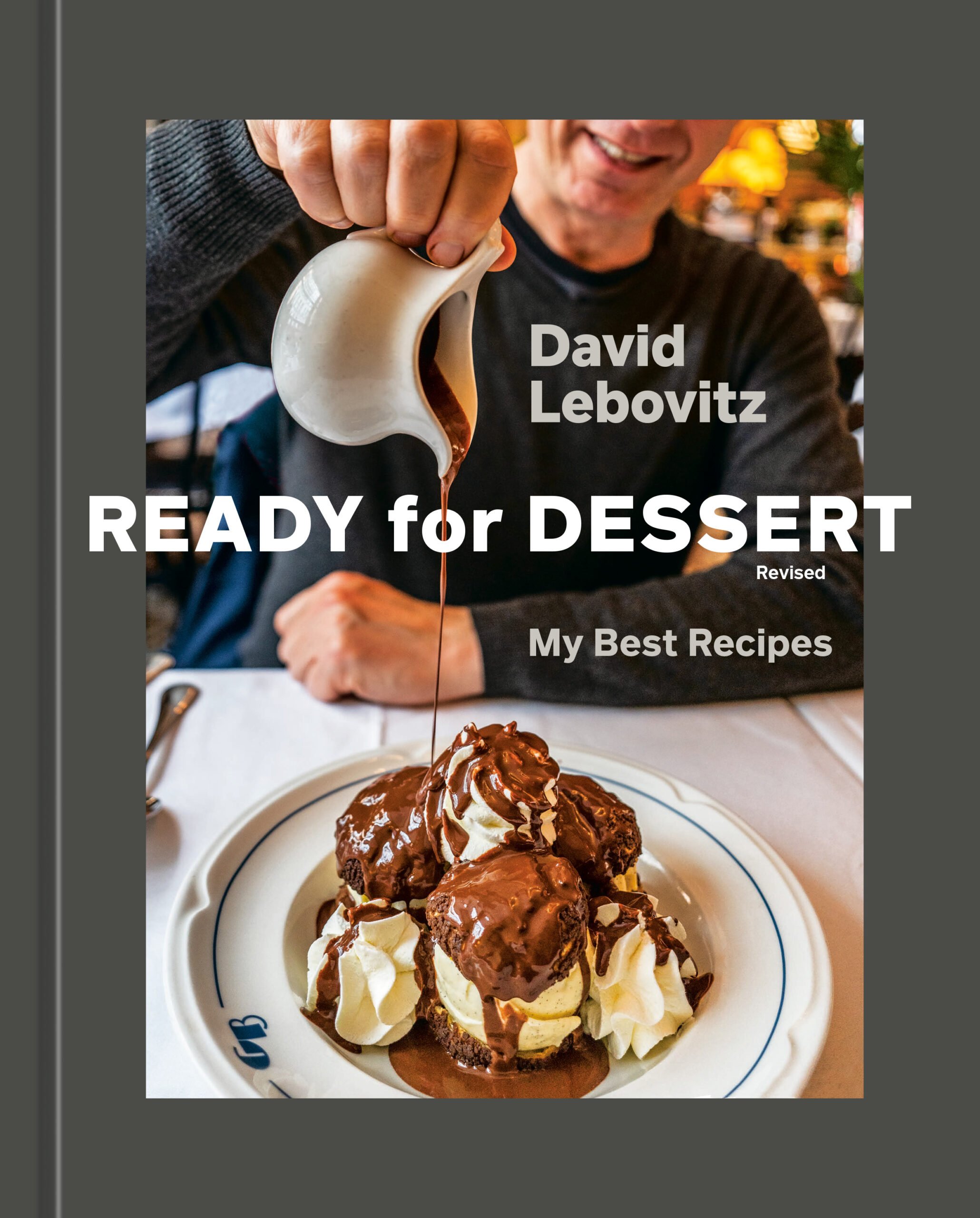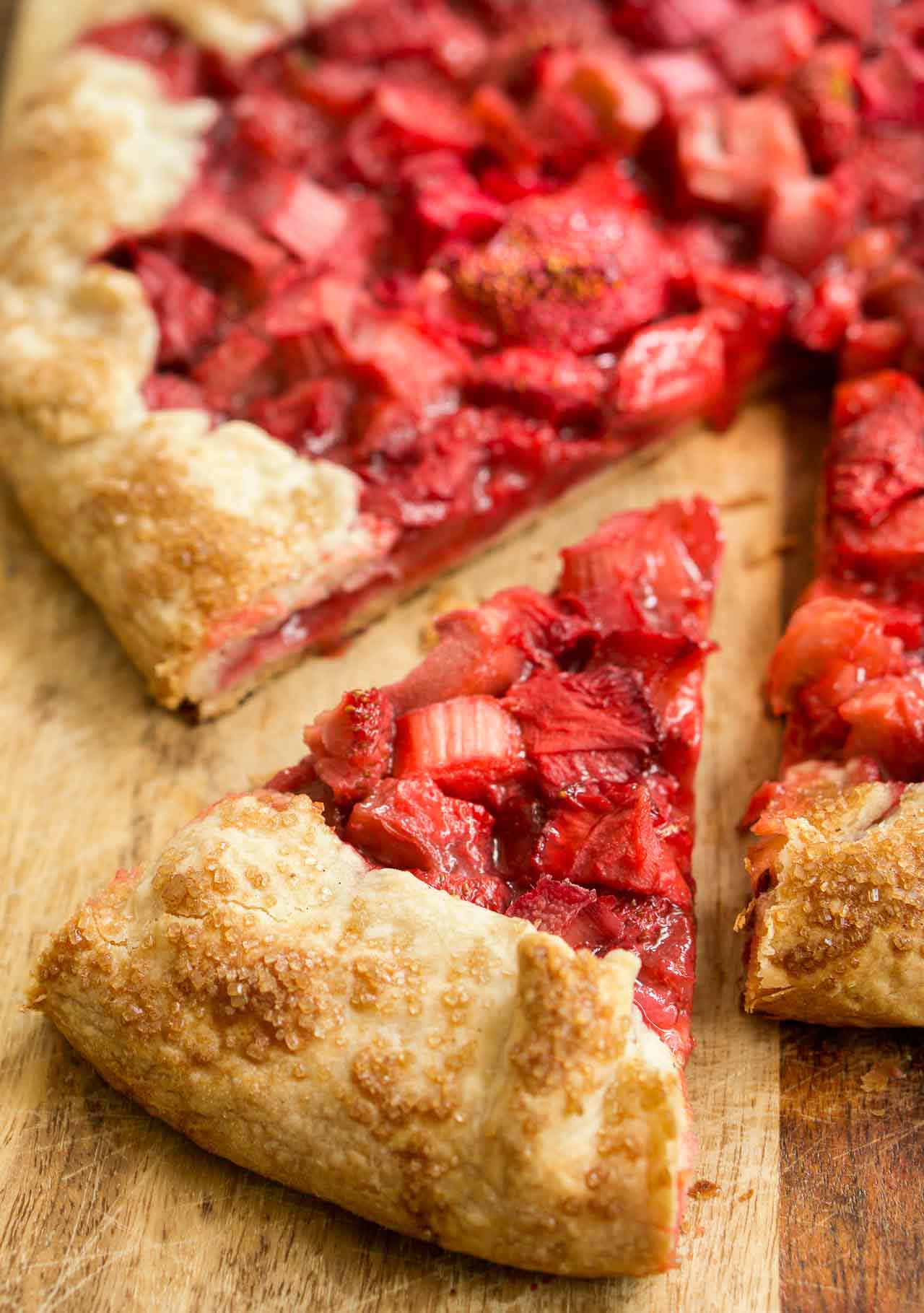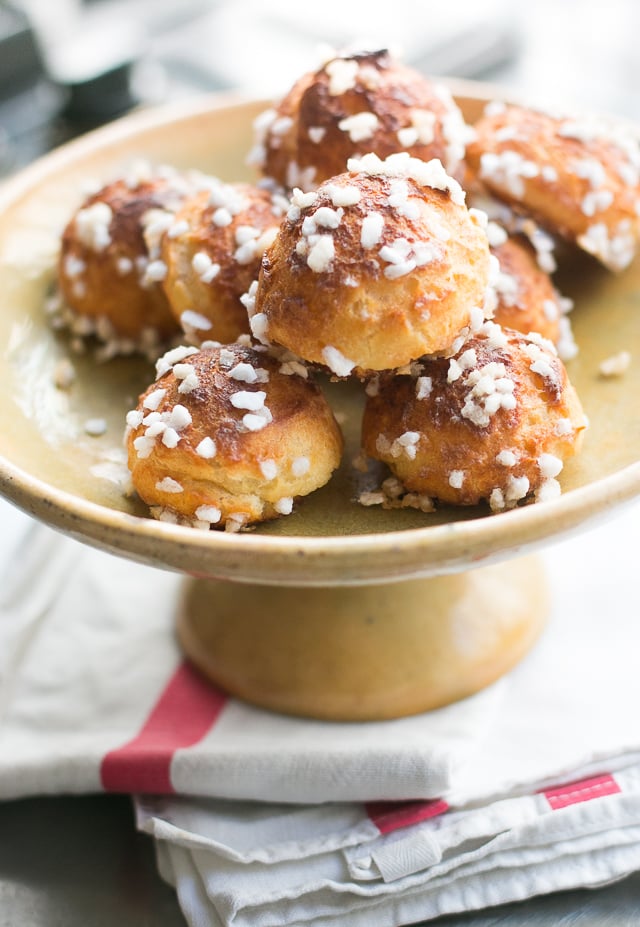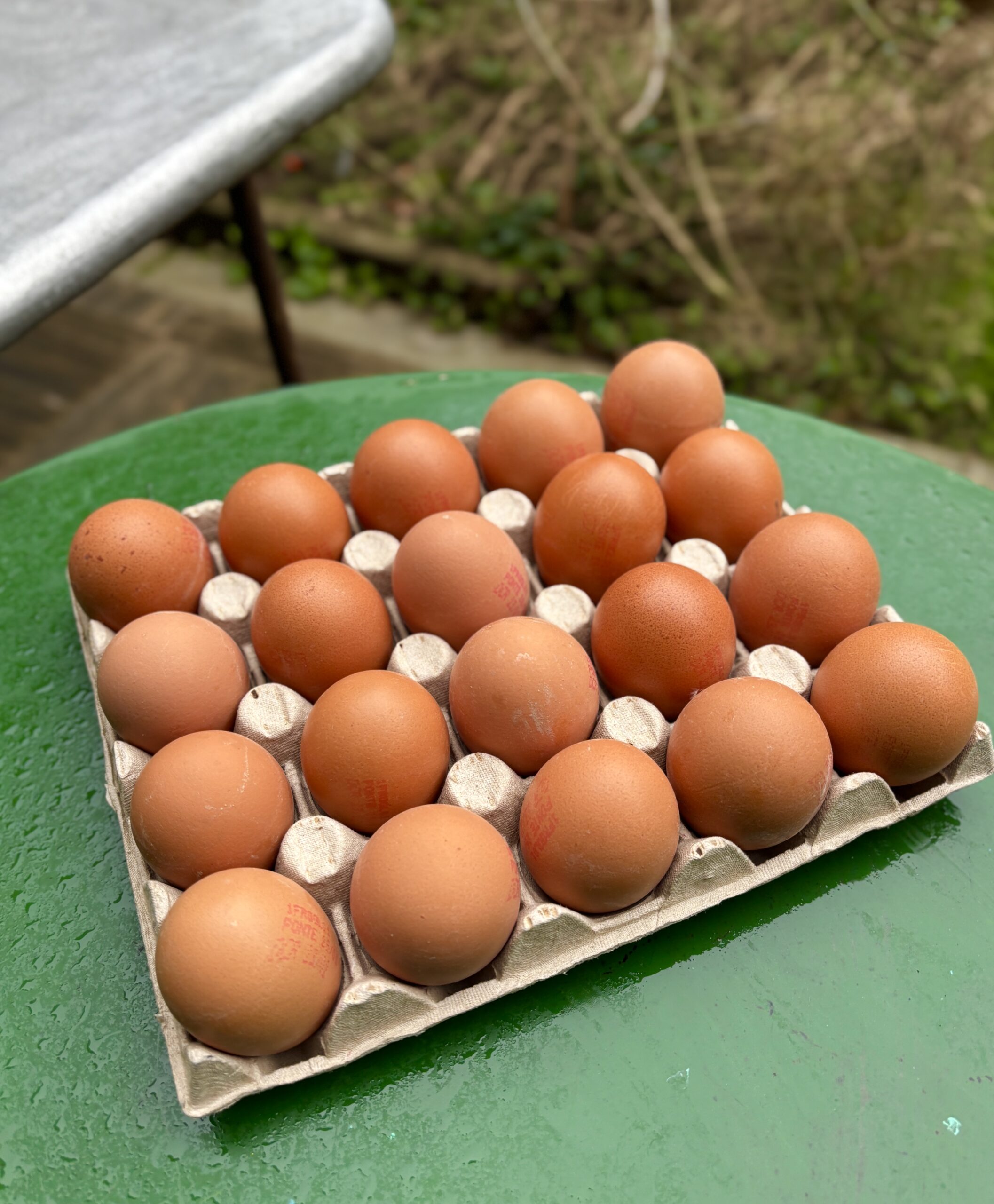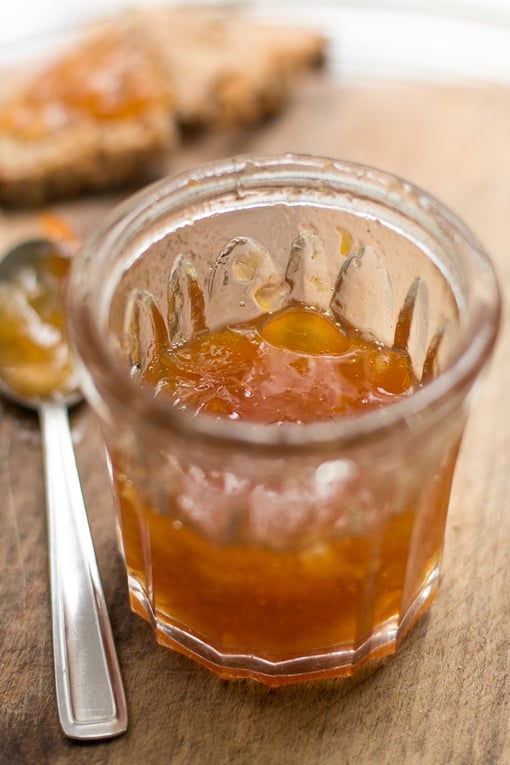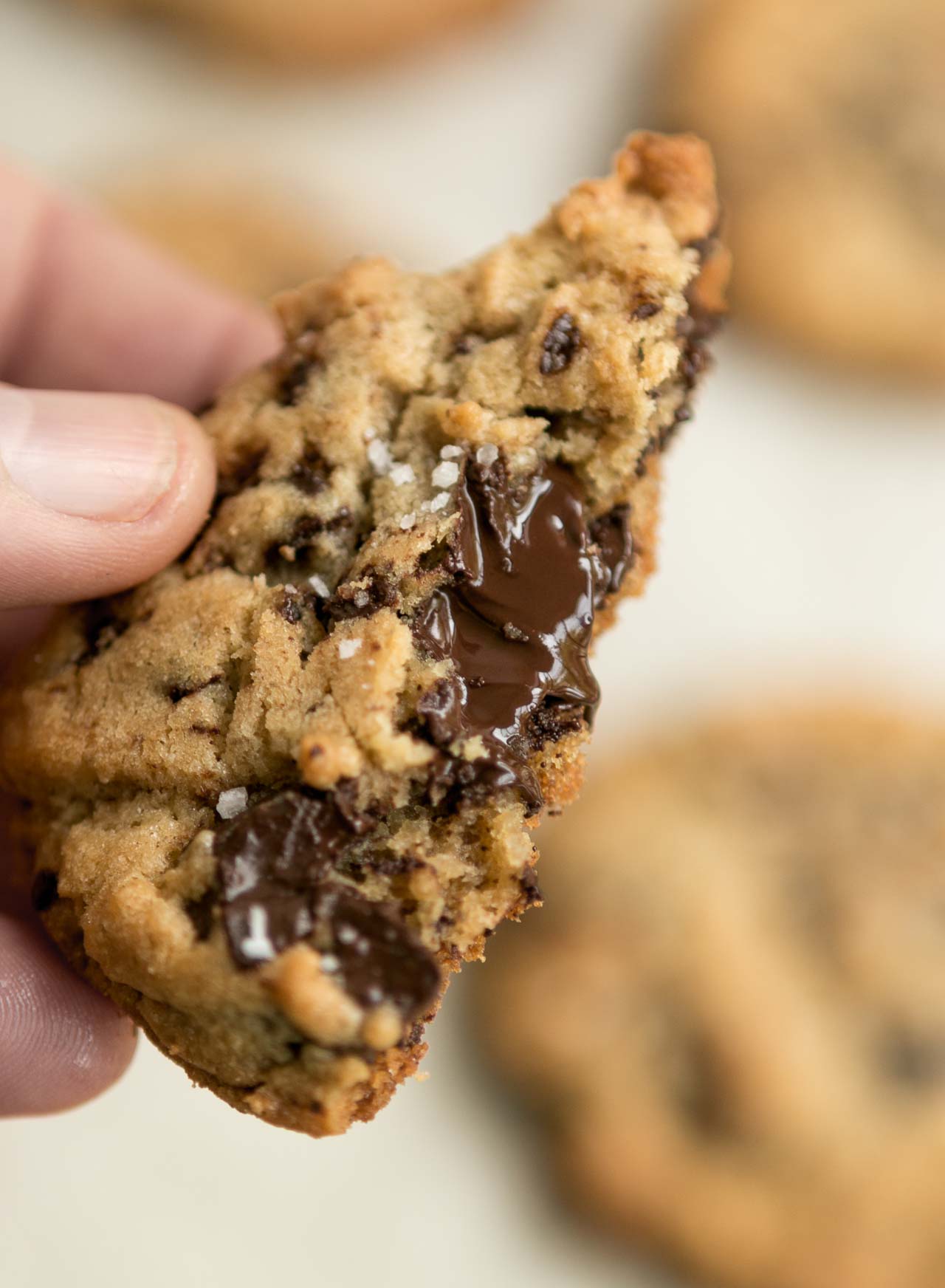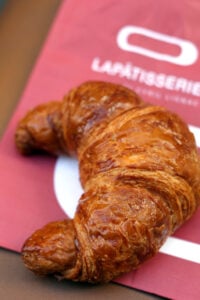L’Instant Cacao: Bean-to-bar Chocolate Shop

If you’re old enough to remember, the Grateful Dead had a song that went, “What a long, strange trip it’s been.” (There are other reasons you might not remember things back then, especially if you were the type that listened to the Grateful Dead.) But that could be the tagline for a number of things, some as recent as 2020, the Covid crisis, and others that stretch back longer, such as the bean-to-bar chocolate movement.
I was there at the beginning of it in the United States, and I clearly remember when Robert Steinberg handed me a melting wad of freshly-made chocolate he pulled out of his pocket at a baking event, that was folded up in a little foil packet, as if it was a part of a drug deal. That eventually bloomed into Scharffen Berger chocolate.
They were the pioneers of bean-to-bar chocolate making in America, back in 1996, and now there are close to two hundred artisan chocolate makers in the States. That’s amazing, considering when Robert and his business partner John Scharffenberger, told me they were going to make chocolate from scratch, I thought it was a crazy idea and would never get off the ground. Thirteen years later, they sold the company for a reported $50 million. So if you want to ask someone for business advice, you might want to ask someone other than me.
However, I do know a fair amount of chocolate, much of it from tasting with Robert and learning about what goes into making chocolate. He was particularly helpful at separating fact from reality, and he gave me an earful about some misinformation out there about the chocolate business and the mystique of making chocolate.
One thing that I did learn from him, and others who followed, was that the business isn’t easy. At the time there weren’t machines for making chocolate on a small-scale and it was a challenge to source good beans.
Paris hasn’t been a bean-to-bar city. (There isn’t a word for ‘bean-to-bar chocolate maker’ in French, and people like Marc use the English word, bean-to-bar, to describe what they do.) Tight quarters and ventilation concerns are two barriers. But the bar, so to speak, is also quite high with larger-scale French chocolate makers doing a rather good job of making chocolate.
Personally, I like the handmade quality of small-batch chocolate; the coffee notes, the wild, red fruit flavors that sometimes come through, the roasty flavors, and other small idiosyncrasies that you don’t find in big-batch European chocolate. Many of the chocolate fondeurs in Paris (chocolatiers who melt chocolate for dipping and enrobing, but who don’t make the chocolate itself) and their customers, aren’t necessarily looking for nuances; they’re looking for balanced, moderated flavors, and chocolate that behaves properly when melted and tempered. So I was grateful to discover L’Instant Cacao.
Marc Chinchole opened his shop at the age of 26, after honing his craft working at Chapon and La Maison du Chocolate, two well-established French chocolate companies. He’s been at it for two years at L’Instant Cacao and is the sole employee at his company; he makes the chocolate, he molds the chocolate, and he sells the chocolate in a compact space that’s barely big enough for more than two or three customers at once.
I wanted to see how he makes his chocolate so I asked if I could come into his workshop, which is separated from the shop by a clear glass partition (so anyone can see whatever he’s doing, and that he’s got nothing to hide). He kindly accepted, and I arrived one morning as he was sorting cacao beans, which he does by hand in what one might call micro-batches.
Born in Montpelier, Marc has traveled around the world, sourcing beans from eight different countries, which include Peru, Cameroon, Guatemala, Bolivia, and Madagascar. They come in different sizes, colors, shapes, and of course, flavors. I know from talking to other chocolate makers, they often find things in bags of cocoa beans, which come from the jungle. (One told me he’d once found a gun!) Marc hasn’t found anything that dramatic but has come across a pair of scissors, and once, he found a tooth.
The sorted beans get roasted on a baking sheet, as one would do at home. I’ve been in a lot of chocolate shops and factories, but I can honestly say that I’ve never been in one that’s as clean and as well-organized as the one at L’Instant Cacao. Everything was gleaming and spotless. When I asked Marc how long he’d been open, I expected him to say, “Two weeks.” But he’s actually been open two years.
When I remarked that it was so clean that it reminded me of a dentist’s office, he laughed and said, “Both of my parents are dentists!” Which made sense.
The only machine that was slightly messy was the mélangeur (above), a stone-grinder that grinds the beans, which is something that you really don’t want to wash unless you have to since even the tiniest amount of water or moisture can ruin a batch of chocolate by breaking the emulsion. For one thing, pure dark chocolate (called chocolate liqueur, 100% pâte de cacao, or unsweetened chocolate) doesn’t spoil easily, which isn’t a problem here as Marc is constantly using the equipment and moving the chocolate along.
Once the beans are roasted and ground, a little cocoa butter is added, around 4%, along with some organic cane sugar, then formed into shiny tablets with a crisp snap.
The different bars, and their flavor profiles, are listed on their website. One bar is a mix of chocolate and coffee beans from esteemed coffee-roaster Verlet, which has a decidedly “French roast” (i.e.; very robust) flavor. He also makes an unsweetened 100% bar that he said is especially popular with women.
Other bars are dotted with candied kumquats or raisins, or strewn with sweet-salty caramelized hazelnuts. I was particularly interested in the white chocolate bars made with sheep’s milk, which adds a pleasant tanginess that he finds pairs very well with chocolate from Madagascar, and a chocolate “au lait” bar made with coconut pulp and sweetened with rice syrup.
Being both a fondeur, someone who melts chocolate for dipping, and a torrifacteur, who roasts his own cacao beans, Marc wears both caps and uses his own chocolates for treats such as his tasty Florentines, above, made with caramelized almonds, candied orange peel, and Niaouli honey, which I’d never heard of but Marc explained comes from Madagascar and uses it because it has a deeply woody flavor and pairs well with the dark chocolate he dips the Florentines in.
Orangettes are popular in France, a classic gourmandise, a little sweet often served after dinner, that get dipped in Tanzanian chocolate, which he describes as a chocolate with yellow fruit and squash flavors. Squash may sound funny to you, but cocoa pods are filled with beans wrapped in a sticky mucilage, much like that of a melon or squash, which are technically all fruits. So it makes sense. (Or may just be something lost in translation on my part.)
He also makes his own classic bonbons and pralines, which also get dipped in Tanzanian dark chocolate. The bonbons have ganache centers made with organic cream, and sport flavors like bitter chestnut honey, candied chestnut cream, licorice, gomasio (a mix of sesame seeds and salt, which works beautifully with chocolate), hazelnut and cashew pralines, and a lemon-lime mélange.
The square chocolates are pralines, made without cream, and have a base of ground caramelized hazelnuts and almonds, and come in similar flavors to his ganache-filled chocolates.
I brought my box of chocolate pralines home on a very hot day – yes, I’ve been keeping these special chocolates at bay, until now but they made it home just fine and melted in my mouth.
In the summer, there’s ice cream in the freezer at the shop as well. But with fall here at the moment, I’m going to focus on these chocolates…
L’Instant Cacao
3, rue des Petits Champs (1st)
Tél: 09 81 36 22 78
M: Bourse
